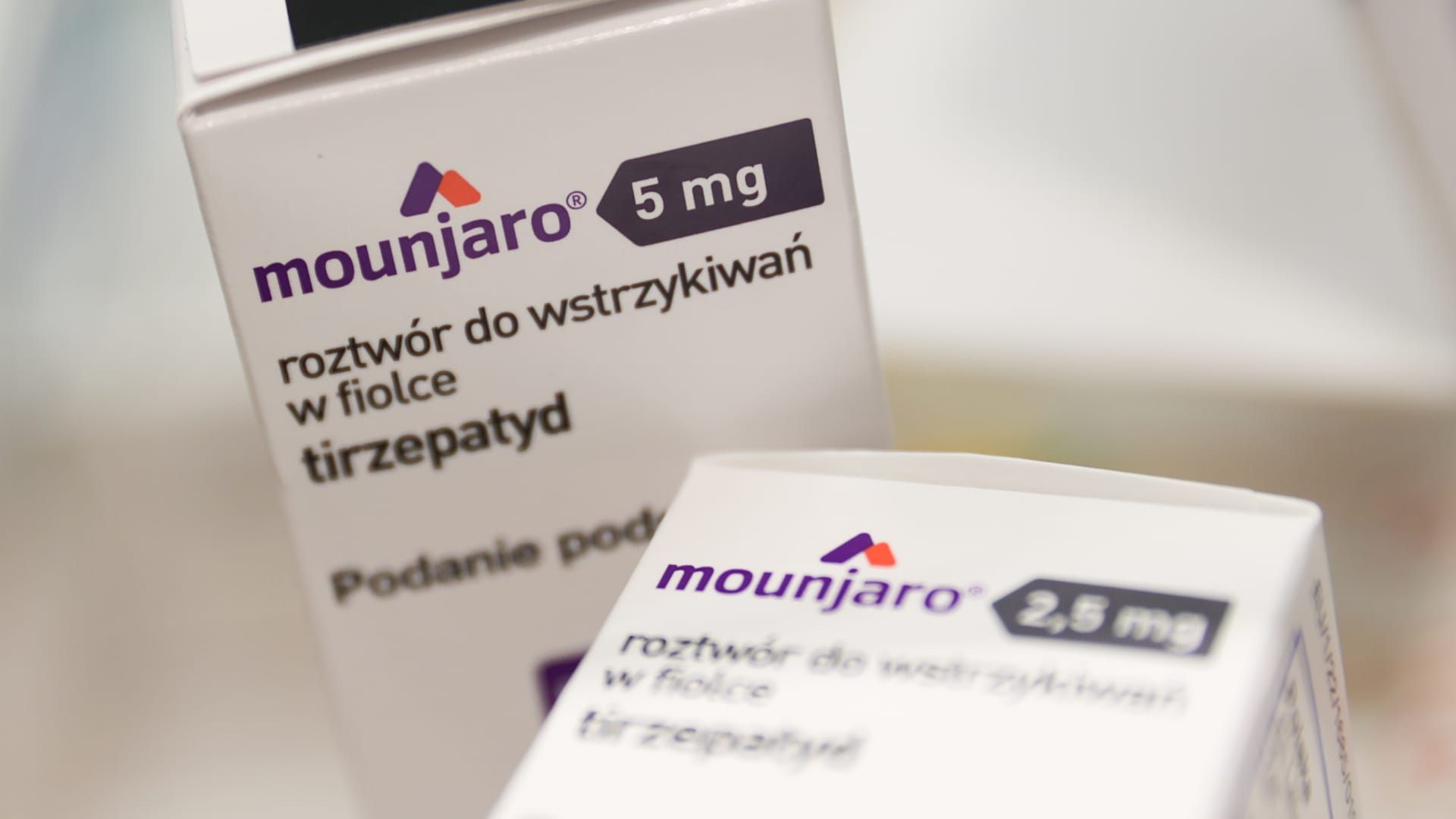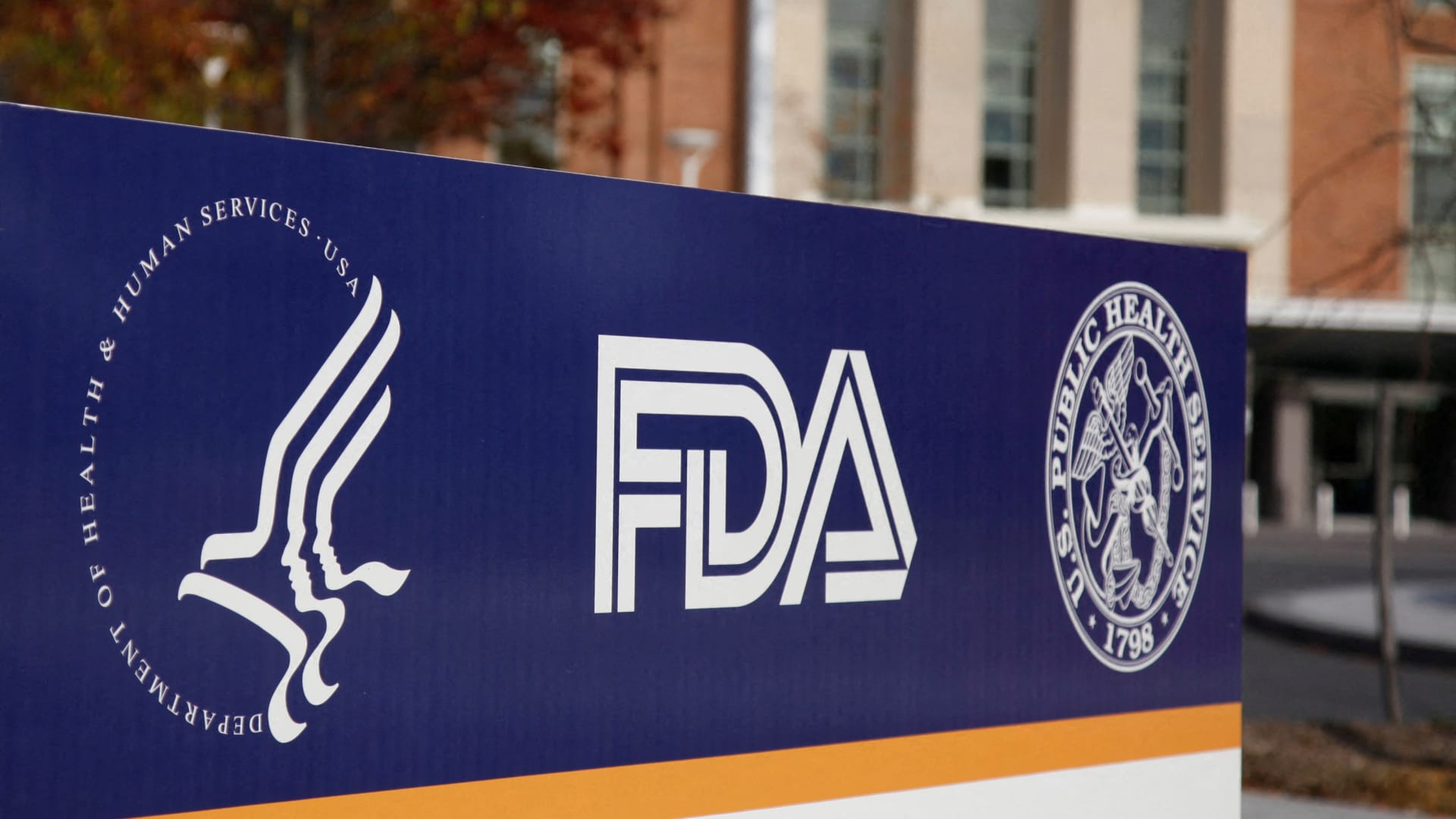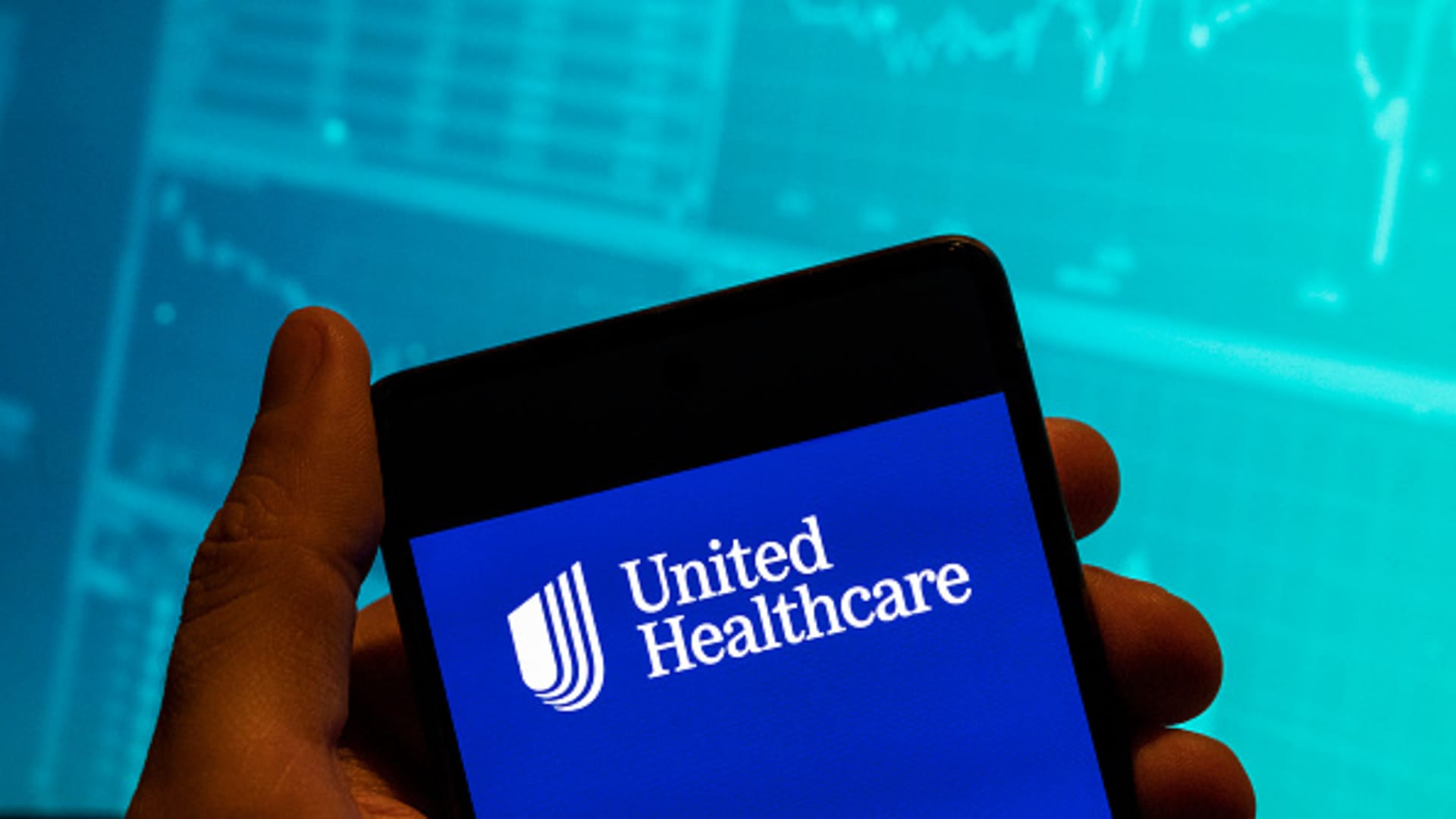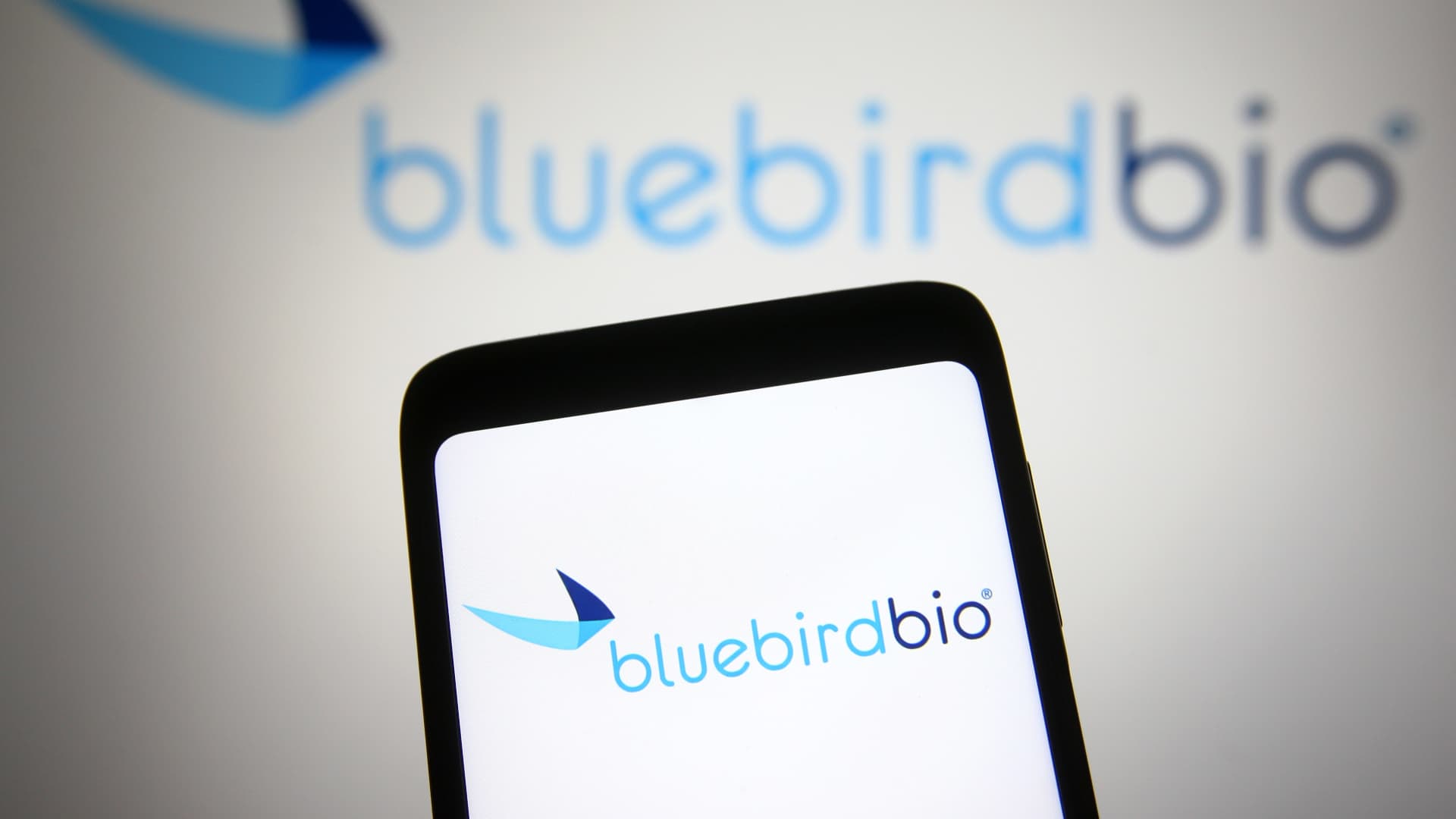Mounjaro manufactured by Eli Lilly and Company Packaging is seen in this illustration photo taken in a pharmacy in Krakow, Poland, on April 9, 2024.
Nurphoto | Nurphoto | Getty images
Eli Lilly On Thursday, he said his successful medication for Mounjaro diabetes, showed benefits to the health of the heart in a late trial essay that compares it directly with the oldest diabetes treatment of the company, Trulicity.
Mounjaro fulfilled the main objective of the study to demonstrate that it was not worse than the Trulicity in the treatment of people with type 2 diabetes and established cardiovascular disease. Eli Lilly said he believes that the new data reinforces the case for Mounjaro to be the first option of prescribers for patients with type 2 diabetes, who have twice as probabilities of having heart disease or strokes that without the disease.
The results occur as trulics, also a best -selling drug for Eli Lilly, faces a patent expiration in 2027, which could further boost Mounjaro's position in the diabetes market.
Mounjaro fulfilled the main objective of the study of almost five years, reducing the risk of cardiovascular death, heart attack or cerebrovascular accident by 8% compared to adults with adults with type 2 diabetes and cardiovascular disease. But the results did not comply with the reference points of some analysts for being considered superior to trulics.
Even so, the company said that Mounjaro showed additional and “more complete” benefits on trulics in the trial, including a death rate of 16% smaller for any cause and greater renal protection. It was the longest and largest trial to date on Tirzepatide, the active ingredient in Mounjaro, registering more than 13,000 people.
Some doctors said that the results, particularly the lowest risk of cardiovascular events, are not surprising, since they assumed that Mounjaro could offer cardiovascular benefits.
But the difference in the death rate for any cause between Mounjaro and Trulicidad is “really quite deep” and “definitely something clinically significant for us as doctors,” said Dr. David Broome, a clinical assistant professor of the Division of Metabolism, Endocrinology and Diabetes of the Department of Internal Medicine at the University of Michigan.
He said that the data helped quantify the difference between Mounjaro and the Trulicity, which will even more help suppliers and patients to determine the best treatment to advance their shared decision making. Broome said that prescription decisions between patients and suppliers will ultimately depend on several factors, such as their insurance coverage, the side effects of a given medication and how well the patient tolerates them.
Dr. Howard Weintraub, Clinical Director of the Center for Cardiovascular Diseases in Nyu Langone Heart, called Mounjaro as a “winner” in the trial, with the only inconvenience that has a little more side effects than the trullicity. But he said that the results may not motivate more people to start Mounjaro, and that the highest list price of the medicine can deter insurers to cover it if it is not substantially better than the trullicity.
Weintraub said he hopes that there will be a lot of “dig” in the data when the complete results are presented at a European medical meeting and is published in a magazine reviewed by pairs in autumn.
Eli Lilly saw the results of the trial as an indicator that doctors should choose Mounjaro for the group of patients.
“Strengthens general history. In my mind, he raises the question of 'Why would you not choose Mounjaro?'” Said Ken Custer, president of Lilly Cardiometabolic Health, in an interview.
The results “eliminate any doubt about why this is the appropriate medication for a patient with type 2 diabetes and type 2 diabetes with cardiovascular risk,” he said, adding that “it makes it even more difficult to say that it does not cover this medication for patients.”
The results also occur when Eli Lilly solidifies their leadership about Novo Nordisk in the booming market for weight loss and diabetes medications. The studies of both companies have demonstrated the additional benefits for the health of their drugs for conditions such as the obstructive apnea of sleep and chronic kidney disease.
Eli Lilly plans to present the health data of the heart to global regulators by the end of the year, and the company said that could lead to the approval, and due to extension insurance, Mounjaro for this purpose in 2026. Any approval would not apply to the weight medication of Eli Lilly Zepbound, which shares the same active ingredient as Mounjaro, but it is specific for patients with obesity of obesity of Obesky and It clarifies to patients and is not clarified to patients and is not clarified to patients with obese.
Currently, the company is studying Zepbound's cardiovascular benefits in patients with obesity and established cardiovascular disease. Phase three is expected to end in 2027, according to Eli Lilly's website.
Even if regulators approve Mounjaro to treat heart disease in patients with type 2 diabetes, it may not significantly expand the use of the drug. This is because Mounjaro's current approval for type 2 diabetes already covers many of these patients: about 30% of people with type 2 diabetes also have cardiovascular disease, according to the foundation of the heart.
In a June research note before the data, TD Cowen analyst Steve Scala said he believes that the tyrzeptide absorption “would not be largely affected” if it shows similar cardiac health benefits such as trulics.
Tirzepatide is already “gaining significant adoption” in the market due to its “strong profile,” said Leadink Partners David Risinger analyst in a separate note in June. He said the experts agreed that, regardless of whether the cardiovascular benefits of Tirzepatide were superior or coincided with those of the trulics in the study, the results “would not significantly alter” the decisions of the doctors.
Mounjaro showed greater improvements than trulics when it came to some cardiovascular measures and decrease body weight and A1C, which is a measure of blood sugar levels.
The security data of Mounjaro and Trulicity were generally consistent with what has been observed in the past. The most commonly informed adverse events for both drugs were in gravity related to gastrointestinal and generally mild to moderate.
– CNBC's Angelica Peebles contributed to this report.












